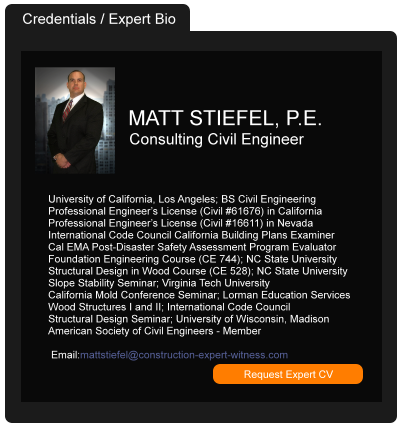Ohio Supreme Court Rules That Wrongful Death Claims Are Subject to the Four-Year Statute of Repose for Medical Claims
January 16, 2024 —
Lewis Brisbois NewsroomCleveland, Ohio (January 2, 2024) - In a landmark 4-3 ruling, the Supreme Court of Ohio ruled on December 28 that wrongful death claims are subject to the four-year statute of repose contained in O.R.C. 2305.113(C) (“Medical Claim Statute of Repose”). Everhart v. Coshocton County Memorial Hospital, Slip No. 2023-Ohio-4670. Statutes of repose create an absolute bar to filing a lawsuit. When applicable, they bar plaintiffs from filing claims outside a specified time frame. The Medical Claim Statute of Repose creates a four-year window for commencing medical claims, which begins to run from “the occurrence of the act or omission constituting the alleged basis of the medical…claim.” O.R.C. 2305.113(C)(1). Medical claims commenced after the four-year period are barred.
The primary question before the Court was whether a wrongful death claim, which is separate and distinct from a medical negligence claim, can qualify as a “medical claim” within the context of the Medical Claim Statute of Repose. The Court answered in the affirmative. A wrongful death claim can qualify as a medical claim if the wrongful death claim “…arises out the medical diagnosis, care, or treatment, of any person.” O.R.C. 2305.113(E)(3). According to the majority, a wrongful death claim can fall within the broad definition of “medical claim” and, if it does, is subject to the Medical Claim Statute of Repose.
Read the court decisionRead the full story...Reprinted courtesy of
Lewis Brisbois
Cold Weather Causes Power Blackouts, Disruptions on Jobsites
February 22, 2021 —
Autumn Cafiero Giusti - Engineering News-RecordA February cold snap in the central U.S. has created record power demand, resulting in outages from Texas to North Dakota and contractors bracing for delays and damage from weather impacts.
Reprinted courtesy of
Autumn Cafiero Giusti, Engineering News-Record
ENR may be contacted at ENR.com@bnpmedia.com
Read the full story... Read the court decisionRead the full story...Reprinted courtesy of
No Duty to Defend Suit That Is Threatened Under Strict Liability Statute
July 09, 2014 —
Tred R. Eyerly – Insurance Law HawaiiThe Washington Court of Appeals found there was no duty to defend the insured under a strict liability statute for alleged contamination when no action was threatened by the agency. Gull Indus., Inc. v. State Farm Fire and Cas. Co., 2014 Wash. App. LEXIS 1338 (Wa. Ct. App. June 2, 2014).
Gull leased a gas station to the Johnsons from 1972 to 1980. In 2005, Gull notified the Department of Ecology (DOE) that there had be a release of petroleum product at the station. DOE sent a letter acknowledging Gull's notice of suspected contamination. In 2009, Gull tendered its defense to its insurer, Transamerica Insurance Group. Gull also tendered its claims as an additional insured to the Johnson's insurer, State Farm. Neither insurer accepted the tenders.
Gull then sued the insurers, arguing they had a duty to defend. Gull contended that because the state statute imposed strict liability, the duty to defend arose whether or not an agency had sent any communications about the statute or cleanup obligations. The insurers moved for partial summary judgment. The trial court ruled in favor of the insurers.
Read the court decisionRead the full story...Reprinted courtesy of
Tred R. Eyerly, Insurance Law HawaiiMr. Eyerly may be contacted at
te@hawaiilawyer.com
Construction Group Seeks Defense Coverage for Hard Rock Stadium Claims
December 09, 2019 —
Sergio F. Oehninger & Daniel Hentschel - Hunton Insurance Recovery BlogIn an insurance coverage action pending in the S.D.N.Y., Hunt Construction Group (Hunt) contends that Berkley Assurance Company wrongfully denied defense coverage for claims arising out of the renovation of Hard Rock Stadium (home to the Miami Dolphins and Miami Hurricanes football teams).
The stadium owner, South Florida Stadium LLC (SFS), hired Hunt to serve as the construction manager for the renovation project. Hunt subcontracted with Alberici Constructors Inc. (Alberici) to design and fabricate roof structures for the stadium.
Hunt and SFS sued Alberici over its work on the project. In March 2017, Alberici asserted counterclaims against Hunt and SFS. In May 2018, SFS sought defense and indemnification from Hunt with respect to Alberici’s coverage claims.
Hunt is insured under claims made and reported professional liability insurance policies issued by Berkley with policy periods from June 15, 2016 to June 15, 2017 (with an automatic extended reporting period through August 14, 2017) and from July 15, 2017 to June 15, 2018. Hunt notified Berkley of Alberici’s counterclaim on July 20, 2017 (within the extended reporting period of the 2016-2017 policy) and of SFS’s indemnity claim on June 5, 2018 (within the 2017-2018 policy period).
Reprinted courtesy of
Sergio F. Oehninger, Hunton Andrews Kurth and
Daniel Hentschel, Hunton Andrews Kurth
Mr. Oehninger may be contacted at soehninger@HuntonAK.com
Mr. Hentschel may be contacted at dhentschel@HuntonAK.com
Read the court decisionRead the full story...Reprinted courtesy of
Irvine Partner Cinnamon J. Carr and Associate Brittney H. Aquino Prevail on Summary Judgment
June 17, 2024 —
Linda Carter - Kahana FeldCongratulations to Irvine Partner Cinnamon J. Carr and Associate Brittney H. Aquino for Prevailing on a Motion for Summary Judgment!
Irvine Partner Cinnamon J. Carr and Associate Brittney H. Aquino prevail on summary judgment in a slip and fall case venued in Riverside County!
Plaintiff filed a lawsuit alleging negligence against Kahana Feld’s client, a grocery store with over 50 stores throughout Southern California. Prior to Plaintiff’s fall, security cameras captured footage of a third-party customer picking up a case of water bottles near the entrance of the store. The customer tilted the case and water streamed to the floor. The customer then returned the leaky case to the pallet, picked up another case of water, and walked away. Approximately a minute and 10 seconds later, Plaintiff walked through the area, slipping on the spilled water.
Read the court decisionRead the full story...Reprinted courtesy of
Linda Carter, Kahana FeldMs. Carter may be contacted at
lcarter@kahanafeld.com
Subsequent Owners of Homes Again Have Right to Sue Builders for Construction Defects
October 07, 2016 —
Mark L. Parisi – White and Williams LLPOwners of homes with damage from construction defects have long had the standing to sue the builders of their homes using the legal theories of 1) breach of contract, 2) breach of implied warranty, and 3) breach of Pennsylvania’s consumer fraud statute, the Unfair Trade Practices and Consumer Protection Law (UTPCPL).
Before the 2014 decision of the Pennsylvania Supreme Court in Conway v. Cutler, even owners who were not the original purchasers of their homes, so-called subsequent owners, had a right to sue the builder of their homes using implied warranty as the legal theory. But the Supreme Court in Conway said in 2014 that even though an implied warranty theory is not based on a written contract, it is a quasi contract theory and because subsequent owners never had a contractual relationship with the builder of their home, the implied warranty cause of action was not available. Subsequent purchasers were thus left without a remedy for damage from defective construction in their homes and builders had a second safe harbor from claims regarding homes they built. The first safe harbor is Pennsylvania’s Statute of Repose. If the home was completed more than 12 years before a lawsuit was filed, the Statute of Repose bars the claim. But after Conway, if the home was sold, this also cut off a builder’s potential liability for construction defects in the home.
ENTER THE UTPCPL
On July 26, 2016 the Pennsylvania Superior Court in the case of Adams v. Hellings Builders issued a non-published (and therefore non-precedential) decision in a stucco construction defect case that held that subsequent purchasers could sue their home’s builder under the UTPCPL because the Act had no requirement that the purchaser of a product, or home, be the original purchaser. The decision cites several other appellate cases not involving construction defect claims that held that the UTPCPL was a valid legal theory for claims regarding products purchased second hand by the plaintiffs in those other cases. The court in Adams held that there was no reason that a suit regarding construction defects in a home should be treated any differently.
Read the court decisionRead the full story...Reprinted courtesy of
Mark L. Parisi, White and Williams LLPMr. Parisi may be contacted at
parisim@whiteandwilliams.com
Property Damage to Non-Defective Work Is Covered
February 18, 2015 —
Tred R. Eyerly – Insurance Law HawaiiThe New Hampshire Supreme Court found some of the property damage evolving from the insured's portion of the work was covered under its liability policy. Cogswell Farm Condo. Ass'n v. Tower Group, Inc., 2015 N.H. LEXIS 3 (N.H. Jan. 13, 2015).
Lemery Building Company, Inc. constructed and developed 24 residential condominium units. After units were sold, the Cogswell Farm Condominium Association sued Lemery, asserting that the "weather barrier" components of the units were defectively constructed and resulted in damage to the units due to water leaks. Cogswell then sued its insurer, Tower Group, Inc., seeking a declaratory judgment that its claims against Lemery were covered.
The trial court eventually determined that exclusions J (1) and J (6) both applied to exclude coverage. Exclusion J (1) excluded coverage for "property damage" to property that Lemery "owns, rents, or occupies." Exclusion J (6) excluded coverage for property damage to "[t] hat particular part of any property that must be restored, repaired or replaced because [Lemery's] work was incorrectly performed on it."
Read the court decisionRead the full story...Reprinted courtesy of
Tred R. Eyerly, Insurance Law HawaiiMr. Eyerly may be contacted at
te@hawaiilawyer.com
Texas EIFS Case May Have Future Implications for Construction Defects
October 02, 2013 —
CDJ STAFFLennar Homes addressed a problem with EIFS in homes built in Texas in the 1990s by replacing every roof they had built. Some of those homes had problems with leaks, rotting, or termites, but other roofs hadn’t suffered any problems. Lennar’s insurers initially refused coverage. Lennar managed to settle with all but one, Markel American Insurance.
Their dispute formed the case Lennar Corp. v. Markel American Insurance Co. This was first tried before a jury and eventually appealed to the Texas Supreme Court. Brian S. Martin of Thompson Coe Cousins & Irons LLP discusses this case at Insurance Journal.
Markel’s claim was that under the policy language, Lennar could not make voluntary payments without getting Markel’s consent, which they did not. But the Texas Supreme Court disagreed, determining that Lennar took, as Mr. Martin notes, “a reasonable approach to a serious problem.”
Markel also made the claim that the whole amount of the damages was not covered by the policy, as they did not view the policy as covering the cost of determining the extent of the damage. The Court disagreed, noting that “under no reasonable construction of the phrase can the cost of finding EIFS property damage in order to repair it not to be considered ‘because of the damage.’”
Mr. Martin concludes by calling the Texas Supreme Court decision “a frontal assault on several critical provisions of liability policies that will assuredly lead to further litigation.” He also notes that the decision “may indicate a shift in the Court’s approach in insurance cases to a more result-oriented jurisprudence.”
Read the court decisionRead the full story...Reprinted courtesy of


































































